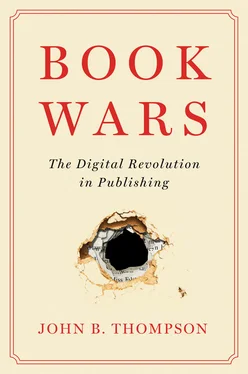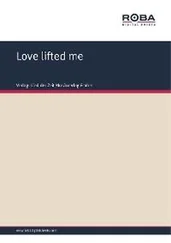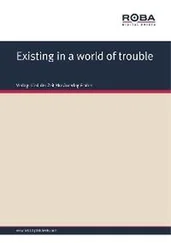These are all perfectly legitimate questions that have exercised commentators, innovators and scholars since the beginnings of the digital revolution, and we will return to them in a later chapter. But for now, I will take a more pragmatic, historical approach: when did the term ‘ebook’ and its cognates enter our vocabulary, who used these terms, and what did they use them to refer to?
The origins and rise of the ebook
The terms ‘electronic book’, ‘e-book’ and ‘ebook’ came into general circulation in the 1980s. The American computer scientist and specialist in computer graphics Andries van Dam is usually credited with coining the term ‘electronic book’, though related work on the characteristics of electronic document systems was being done as early as the 1960s by Theodore Nelson, Douglas Engelbart and others. 2The creation of the first actual ebook is usually attributed to a chance event in July 1971. Michael Hart, a freshman at the University of Illinois, decided to spend the night at the Xerox Sigma V mainframe at the University’s Materials Research Lab rather than walk home and then have to return the next day. 3On the way to the Lab, he stopped at a shop to pick up some groceries for the night ahead, and when they packed the groceries they put in the bag a faux parchment copy of the US Declaration of Independence. That night at the Lab, Michael was fortuitously given a computer operator’s account with a virtually unlimited amount of computer time – 100 million dollars’ worth – credited to it. As he unpacked his groceries, thinking about what to do with all that computer time, the faux parchment copy of the Declaration of Independence fell out of the bag, and that gave him an idea: why not type in the Declaration of Independence and make it as widely available as possible? That was the beginning of Project Gutenberg. The plan was to find books and documents in the public domain that would be of general interest, key them into the computer and make them available in the simplest electronic form possible – ‘Plain Vanilla ASCII’ – so that they could be easily shared. A book would be turned into a continuous text file instead of a set of pages, with capital letters used where italics, bold or underlined text appeared in the printed text. After typing in the Declaration of Independence, Michael typed in the Bill of Rights and a volunteer keyed in the US Constitution, followed by the Bible and Shakespeare, one play at a time. And so the process continued, text by text, and eventually, by August 1997, Project Gutenberg had created 1,000 ebooks, ranging from the King James Bible and Alice’s Adventures in Wonderland to La Divina Commedia , in Italian.
Project Gutenberg was, and remains, an open archive of ebooks that can be downloaded for free, but, in the course of the 1990s, many publishers also began to explore the possibility of making some of their books available as ebooks. The main difference between initiatives like Project Gutenberg and the first forays of publishers into the emerging world of ebooks was that publishers were dealing for the most part with material that was under copyright, rather than public-domain documents, and hence publishers had to ensure that they had the right to release their titles in an electronic format before they actually did so. This was not a straightforward matter since, prior to around 1994, most publishers’ contracts did not include any mention of ebooks, electronic formats or digital editions – this simply wasn’t envisaged as a format that publishers might want to exploit at some point, so no explicit provision for this format was made in the contracts that publishers negotiated and signed with authors and agents. This changed around 1994: from this point on, many publishers did add to their contracts an explicit provision for electronic formats or digital editions. The specific wording of the clauses, the ways in which revenues would be split and the timing of these contractual changes varied from publisher to publisher, and, even at the same publisher, varied over time – Random House introduced the first changes to their contracts in 1994, others followed suit later. However, for all those books for which contracts had been signed prior to 1994, publishers who wished to release electronic editions had to go back to authors, agents and estates and seek to negotiate an addendum to the original contract that would give them the explicit right to release an electronic edition of the work. Even when authors were amenable, this was a time-consuming and laborious process. Moreover, given the uncertainties surrounding the digital revolution and its potential impact on the publishing industry, it was also a contentious and conflict-ridden process in some cases, as the various parties tried to use whatever leverage they had to negotiate new and better terms in a context where previous norms for print editions could not necessarily be construed as a reliable guide.
And then there was the non-trivial issue of how a book released in an electronic format would actually be read. Texts could, of course, be read on desktops and laptops, and various dedicated reading applications were available for these devices; but desktops and laptops lacked the convenience and portability that many readers had come to associate with the print-on-paper book. A variety of portable, hand-held devices and PDAs (Personal Digital Assistants) appeared in the 1980s and 1990s, and software was made available for reading ebooks on these devices, but the screen sizes were typically small and the resolutions were relatively poor. In 1998, the first two dedicated ebook readers were released in Silicon Valley: the Rocket eBook, a paperback-size device that held 10 books, weighed a pound and cost $270, was released by Nuvomedia in Palo Alto; and the SoftBook, which held 250 books, weighed 3 pounds and cost around $600, was released by SoftBook Press in Menlo Park. While the devices were innovative and attracted a lot of attention, they sold poorly (less than 50,000 units between them). In 2000, both Nuvomedia and SoftBook Press were acquired by Gemstar, a large technology company that developed interactive programme guide technology for cable and satellite television providers. The Rocket eBook and the SoftBook were phased out and replaced in November 2000 by two versions of the new Gemstar eBook, one with a black and white screen and the other with colour, manufactured by RCA under licence to Gemstar. But, again, sales were disappointing, and in 2003 Gemstar stopped selling ebook readers and ebooks.
Numerous other reading devices appeared and disappeared in the late 1990s and early 2000s – enough to fill a small museum of now-defunct consumer technology. But the first real breakthrough came in April 2004 when Sony launched the Librié 1000-EP in Japan, which was the first reading device to use e-ink technology. Unlike backlit screens, e-ink uses reflected light to simulate the appearance of a printed page. The screen is filled with tiny capsules containing charged pigment; when the electrical charge applied to each capsule is adjusted, its appearance changes, thereby altering the display and producing a page of text. The screen holds that display until the charge is adjusted again to produce a new page of text. E-ink is much gentler on the eye than backlit screens and is easy to read in direct sunlight; it is also very economical in terms of battery use, since electricity is used only when the page is changed. The Sony Reader was launched in the US in October 2006, selling at around $350 and capable of holding 160 books, and ebooks could be purchased from Sony’s own ebook library which offered up to 10,000 titles.
The Sony Reader was a major advance, but it was the Amazon Kindle, released a year later in November 2007, that was the real game-changer. Like the Sony Reader, the Kindle used e-ink technology rather than backlit screens; but, unlike Sony, Amazon used wireless 3G connectivity, free for the user, to enable readers to download ebooks directly from Amazon’s Kindle Store. Readers could now buy ebooks directly from their reading device, without having to use their computer to go online to download the ebook and then transfer it to their reading device via a USB cable. Now, buying ebooks was as easy as a single click. The first Kindle retailed at $399 and was capable of holding 200 books, and the Kindle Store claimed to stock 90,000 titles, including most of the books on the New York Times bestseller list. When the Kindle was released on 19 November 2007, it sold out in five and a half hours and remained out of stock for five months – though what exactly that meant in terms of actual sales remains a mystery because Amazon never disclosed how many they produced. In 2009, Amazon released the Kindle 2, a slimmer version with much more internal memory, capable of holding around 1,500 books, and it reduced the price to under $300. (The development of the Kindle is examined in more detail in chapter 5below.)
Читать дальше












